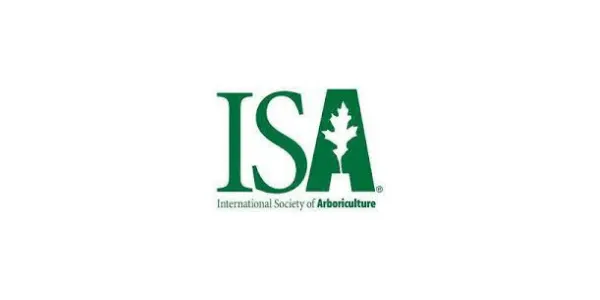
If my neighbour's tree branches hang over onto my property, do I need their permission to cut them?
Clean air. Shade. Privacy. Trees give us all of these and more. But they can also cause disagreements, especially between neighbours. Disputes over trees can arise for many reasons, including overreaching branches and roots, damage caused by a falling tree or overhanging branch, and trespass onto a neighbour’s property to deal with a tree. Learn how to deal with problems involving trees and neighbours.
What you should know
When you have a disagreement with your neighbour about a tree, what you can do partly depends on who owns the tree. And that depends on where the tree is relative to the property line (also known as the boundary line).
Basically, if the trunk and visible roots are wholly on your neighbour’s property, your neighbour owns the tree. But if some of the base is on the property line, you and your neighbour jointly own the tree.
So where’s the property line? There might be a fence or hedge or some other physical barrier between the two yards. But these may not be legally accurate markers of the property line.
To be certain of where your property line is, take a look at your land survey. You might have received one when you bought your home. A land survey will show the location of your property line. It may also show where markers, such as pins, have been placed in the ground to help identify the property line.
If you don’t have a land survey, you can consult a land surveyor and have a land survey done. It’ll help you figure out where, literally, to draw the line between your and your neighbour’s properties.
More on getting a land survey
You can search the BC land title office to see if a land survey is part of the public record for a property. You can also hire a registered BC land surveyor to come to the property and identify the property line. The cost of a land survey may range from about $500 to $800. The actual cost will depend on the property size, location, history, and other factors.
If the trunk and any visible roots of your neighbour’s tree are close to, but not over, the property line, this is a border tree. Your neighbour owns and is responsible for maintaining it, including any branches that hang over onto your property.
If part of a tree trunk or part of any visible roots are growing across the property line, then it’s a boundary tree. Both you and your neighbour jointly own it and are responsible for maintaining it. Each of you has to get the other’s agreement before doing anything to the tree.
Many cities and towns have rules in place to protect trees and regulate tree cutting. These rules are typically in local bylaws. When you and your neighbour have a disagreement about a tree, what you can do depends on who owns the tree, as well as what your local tree bylaws say.
For example, many BC municipalities require property owners to apply for a tree removal permit if they want to cut down a tree above a certain size. The threshold is typically a tree trunk diameter of 10 to 20 cm or larger, as measured at 1.4 m above the ground. Take a look at this diagram from the city of Vancouver website.
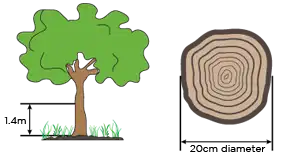
Often, a tree removal permit will require a property owner to plant one or two replacement trees for every tree that’s cut down. Municipal bylaws will often set out the number, size, and type of replacement trees, as well as where on the property they can be planted.
If you want to prune or remove a tree, check with your municipality about the laws that apply to you. Call 3-1-1, contact your local municipality directly, or check your local municipality’s website.
Find your local tree bylaw
On CivicInfo BC, you can search across local government websites province-wide to find local bylaws relating to trees in your community. In the search box, type in tree bylaw and the name of your community. For example, to find a tree bylaw for Surrey, you could type tree bylaw surrey.
Trees beautify and benefit the environment. They also give your home shade and privacy. But before you buy and plant one, there are some things to consider. These include the type of tree and where to plant it.
Type of tree
Some municipalities have rules about the types of trees you’re allowed to plant on your property. For example, if you got a tree removal permit and have to plant a replacement tree, your municipality may have a list of tree types you can choose from. Some types of trees may not be allowed because they grow too big or they’re considered invasive. (This means they don’t occur naturally in BC, and can end up causing ecological damage and costing a lot of money to deal with.)
Where to plant
Check your municipality’s local bylaws in case there are rules about where you can plant a tree in your yard. Even if there aren’t any, there are general guidelines you should follow. For example, don’t plant trees close to overhead utility lines. This can pose a safety hazard. Also, FortisBC recommends you “click, call or check before you dig”: contact BC 1 Call to find out if there are any buried utility pipes or lines. (This service is free.)
Some people like to plant trees near or on the property line for privacy. But leaves or fruit falling from overhanging branches might interfere with your neighbour’s use and enjoyment of their property. These boundary trees may also throw unwanted shade on your neighbour’s yard.
Planting too close to the property line
There may be bylaws where you live about where you can plant a tree in your yard. Even if there aren’t any, ask yourself: “What would a good neighbour do?” They’d probably plant the tree a reasonable distance from the property line. How far may depend, in part, on the tree’s eventual height and diameter. A short, narrow tree could be closer to the property line than a tall or broad one.
Overreaching branches and roots can be annoying and inconvenient. This might be especially true if:
leaves, fruit, nuts or other debris fall from your neighbour’s tree onto your property
tree roots are a tripping hazard or cause damage to your yard, the foundation of your home, or part of your property (like a driveway)
In law, these situations may be considered a nuisance. This means they amount to an unreasonable interference with your right to use and enjoy your property.
What you can do depends in part on who owns the tree and any local bylaws relating to trees.
If you jointly own the tree
If the tree is a jointly owned boundary tree, you and your neighbour have to agree on what is to be done with it. You can talk about who will do the work and how the costs will be covered. Once you work out the details, you can put them in a letter to your neighbour.
If your neighbour owns the tree: the self-help rule
If your neighbour owns the tree, you can ask them to prune the tree’s branches or dig up its roots. You can ask that they (at their cost) hire a professional arborist to do the work, but they don’t have to; they can choose to do it themselves. You can also confirm with them that they will clean up any debris that is left.
If your neighbour is uncooperative, or if you’d rather do it yourself, you can choose to cut back your neighbour’s overhanging branches or dig up the roots — up to the property line — and clean up the debris left on your property. You don’t need to get your neighbour’s permission (but you can give them a friendly heads-up if you like). This is called the self-help rule. But in using it, you:
can’t enter your neighbour’s property without permission
can only prune or cut back the branches or roots that are on your property
shouldn’t cause any unnecessary damage to the tree
If you cut the branches or dig up roots past your property line, you’re trespassing. In that situation, if the tree is damaged or it dies, you may face:
a fine for breaking a local bylaw (if there is one),
legal action by your neighbour, or
both of the above.
If a tree on your neighbour’s property falls and damages your property, your neighbour isn’t responsible for the damage unless it was caused intentionally or through negligence.
Negligence means your neighbour didn’t take reasonable care in the circumstances. Or they were warned or knew the tree was damaged or diseased and might fall, but still failed to investigate or take steps to deal with the hazard. In this type of situation, your neighbour (or their insurance company) could have to pay for the cost of the damage.
Your municipality is responsible for inspecting and maintaining trees on public property. But because there are so many trees in public spaces, municipalities often rely on reports from the public to take action.
There might be a tree on public property next to your property that poses a hazard or is causing damage. Or there may be an unhealthy tree across from your home that’s part of a community street plan. You can contact your municipality and ask them to inspect and maintain these trees that line boulevards.
Generally, you can’t prune or cut trees on public property without your municipality’s permission. If you do, you’ll be breaking local bylaws. You may have to pay a fine or face a legal action.
If you’ve contacted the municipality to report an unhealthy tree and it isn’t inspected and maintained, the municipality can be responsible for paying for the cost of damages to your property.
Time limits in a legal action against a municipality
BC law says a municipality won’t be responsible for paying damages in a legal action unless you’ve provided written notice about the legal problem within 60 days. You also have to start a court action within six months of the property damage occurring. Otherwise you’re out of time to sue the municipality.
Work out problems
Whether you’re thinking of planting a tree or you’re concerned about a neighbour’s tree, the first step is to talk about it with your neighbour. To get ready for the conversation, think about the outcome you’re seeking.
If you’re wanting to plant a tree, start by explaining why you want it where you want it. Describe how the tree will benefit both of you. If you aim to put the tree right on the property line, you need your neighbour’s consent (see above under what you should know). Invite your neighbour to talk about options that will work for both of you.
If you have issues with a neighbour’s tree — for example, it overhangs your property — explain your concerns and ask for their thoughts. If your neighbour understands where you’re coming from, it can be easier to explore solutions together. You can put any agreement you reach in a letter to your neighbour.
To help you prepare for the conversation, we offer tips for talking with your neighbour and a template for preparing for the talk.
If talking with your neighbour doesn’t resolve matters, you can write a letter setting out your plans or concerns. For example, say you’re worried about the condition of a tree in your neighbour’s yard, as it’s leaning far to one side and a large branch is hanging over your property. In the letter to your neighbour:
1. Explain your concerns
"The tree appears to be fragile and it’s leaning toward my property. If branches fall, they could damage my garden or my child’s play structure."
2. Suggest ways the situation might be resolved
"Can I suggest you arrange for an arborist to come look at the tree and recommend options. Or that you have the tree pruned."
3. Describe what will happen if they outright refuse
"I'm prepared to contact the municipality if we can't sort this out together."
We have a short template letter that can help you get started. It deals with a problem tree; you can adapt it to fit your situation. We also have a more detailed template letter about an unsafe tree.
If you’re unable to resolve the matter directly with your neighbour, consider mediation. This involves you and your neighbour meeting with a neutral third party, a mediator, who’ll work to help you reach an agreement. Mediation is quicker and much less expensive than taking legal action. And it can help preserve a good neighbourly relationship.
Finding a mediator
You can search for a mediator based on the city or town you live in and the type of problem you have. On the ADR Institute website or the Mediate BC website, select community in the area of expertise or practice.
Whether you’re concerned about a neighbour’s tree or a tree on public property near yours, you can contact your municipality.
For example, you may believe something your neighbour did doesn’t follow local bylaws, such as rules about cutting down a tree or planting a replacement tree. In this case, find out who’s responsible for enforcing the relevant bylaw. After receiving your complaint, the municipality may inspect the problem. They could give your neighbour a fine for violating local bylaws.
If none of the steps above resolve the problem, it may be time to consider legal action. For example, if your neighbour has pruned or removed overhanging branches past the property line, you could sue them for trespass. Or, if you’d told your neighbour about the danger posed by an overhanging branch, and it later fell and caused property damage, you could start a legal action in nuisance or negligence. (See what you should know, above, for an explanation of these concepts.) You could also start a legal action before a dangerous tree or branch falls, to require your neighbour to remove it.
If you prove your claim, you’ll usually get an order for compensation. But a court or tribunal can also order other remedies, such as requiring a homeowner to cut overhanging branches and clean up the debris.
If your claim is for less than $5,000, you can bring it before the Civil Resolution Tribunal. This online system encourages a collaborative approach to resolving disputes.
If your claim falls between $5,000 and $35,000, you can bring a legal action in Small Claims Court. This is faster and less complicated than suing in the British Columbia Supreme Court.
Taking legal action against a neighbour will almost certainly strain your relationship — no small matter since you’re living side by side. Think of it, therefore, as a last resort.
Common questions
Your neighbour’s tree may be upsetting you. For example, maybe it has overreaching branches or roots (or both), or looks unhealthy or unsafe, or is healthy but is blocking light or beautiful views. Still, you can’t go onto your neighbour's property without permission and cut it down. That’s trespassing, and your neighbour would have a legal claim against you.
On the other hand, a property owner is responsible for the health and maintenance of the trees on their property. They ought to know the condition of their trees and whether they pose any dangers. If necessary, they (or an arborist they hire) should remove damaged, weak, or rotting branches.
If your neighbour tells you they’re concerned about the health of one of your trees, and the risk of harm it poses, you have to decide what to do. You can:
Do nothing. But then you may have an angry neighbour and may even have to deal with a legal claim.
Hire a professional to assess the tree. Make sure you get permission for them to enter the neighbour’s yard so they can inspect the tree from that angle and document their observations and recommendations.
Fix the problem. Accept what the neighbour tells you is the problem and pay for it to be fixed.
You do not have to remove a healthy tree that is blocking your neighbour’s view or casting unwanted shade.
It can, but only in certain circumstances. BC law says a strata corporation can’t make a big change in how common property is used or how it looks unless:
most of the strata owners agree to the change at an annual or special general meeting, or
an immediate change has to be made for reasons such as safety or the prevention of significant loss or damage.
An example of the latter might be because the trees are dangerously hanging over utility wires. In such a case, the strata corporation could cut down trees on common property. It could also cut down trees if the majority of strata owners agree.
On the flip side, a strata owner who wants to plant trees on common property has to get the strata corporation’s written permission beforehand. (You can’t just go make a change to common property — even a good one!) The owner can look for guidance in the strata’s bylaws and the Strata Property Act.
Who can help

Association of BC Land Surveyors
Maintains a searchable list of land surveyors and regulates surveying in BC.
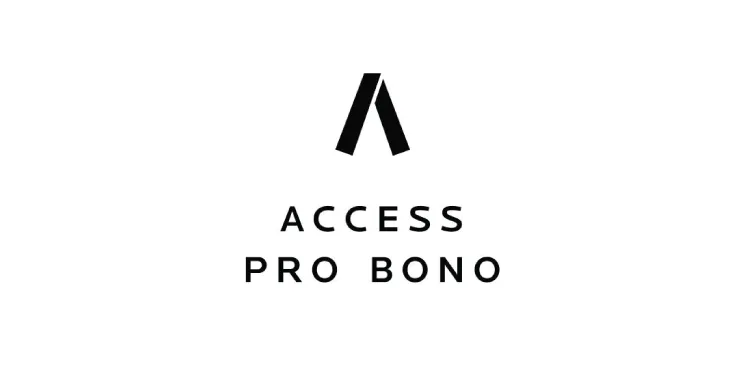
Access Pro Bono's Free Legal Advice
Volunteer lawyers provide 30 minutes of free legal advice to people with low or modest income.
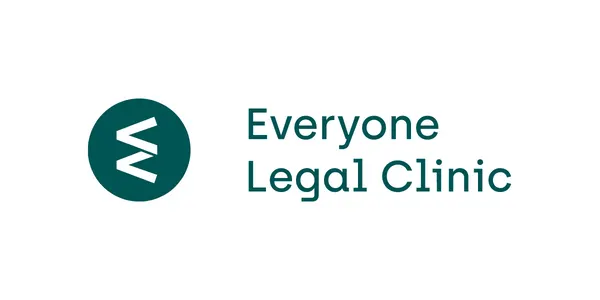
Access Pro Bono’s Everyone Legal Clinic
Clinicians provide affordable fixed-fee services on a range of everyday legal problems.

Lawyer Referral Service
Helps you connect with a lawyer for a complimentary 15-minute consult to see if you want to hire them.
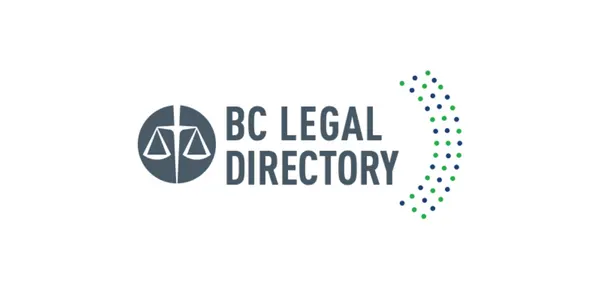
BC Legal Directory
Search for a lawyer by community or legal issue. From the Canadian Bar Association, BC Branch.
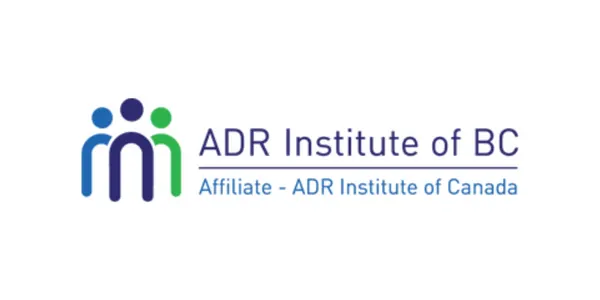
ADR Institute of BC
Maintains a roster of qualified mediators and arbitrators who help with dispute resolution.

Mediate BC
How mediation in BC works, and a roster of mediators.

